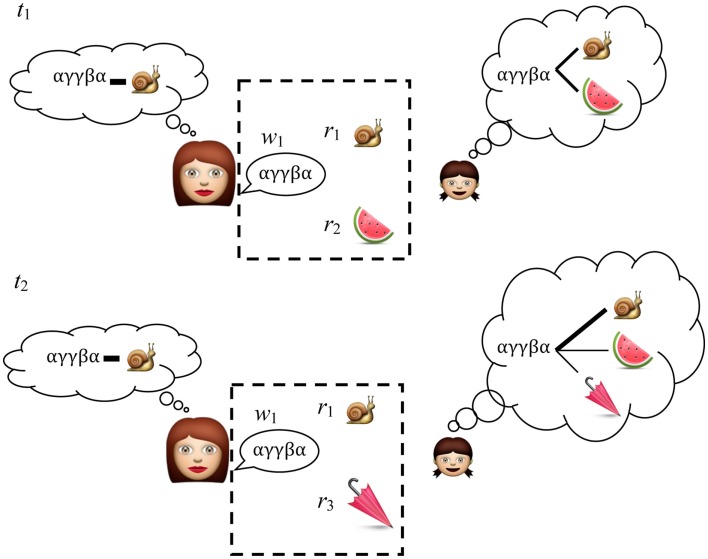Figure 3.
An adult chooses a linguistic expression w1 associated with concept r1 that they want to communicate. At t1 the child doesn’t know whether the novel word w1 refers to r1 or r2 and for now the best she can do is remember the associations between the scene and the words. At t2 she hears w1 with one object r1 familiar from t1 and one new object r3. Cross-situational learning works by repeatedly recording the associations between language and the context in which it is used. Over time, the signal (an intentional word-referent pair) is more strongly represented than the noise (an unintentional word-referent pair). Items that appear in the hashed box are the raw data on which the child makes the cross-situational associations.

